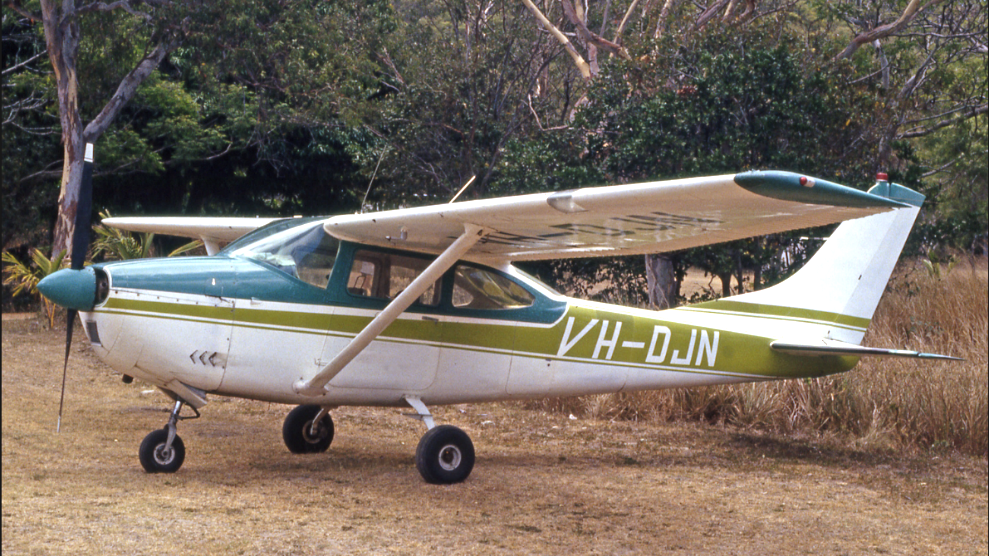
|
Key points:
|
Low cloud and reduced visibility almost certainly resulted in the pilot of a Cessna 182 losing visual reference with the ground before the aircraft collided with rising terrain.
The aircraft had departed Mount Garnet, far north Queensland for a 20-minute flight under visual flight rules (VFR) to Atherton, with the pilot the sole occupant. The forecast weather for the 8 April 2019 flight included low cloud extending to the ground in areas of higher terrain, and low visibility in cloud and showers of rain.
The ATSB’s investigation into the accident found that cloud and low visibility almost certainly precluded the pilot from navigating by ground reference, and changes in aircraft direction and altitude, as recorded by the aircraft’s GPS unit, were indicative of the pilot manually flying the aeroplane rather than having the autopilot engaged.
“Changes in track were consistent with what would be expected if attempting to avoid weather,” said ATSB Director Transport Safety Dr Stuart Godley.
As the aircraft approached the Herberton Range it climbed to an altitude about 400 feet higher than the highest terrain in the area, but this was very likely not above the cloud tops, the investigation notes. It could not be known whether the pilot then descended in an attempt to get under the cloud, having lost visual reference with the ground, or due to geographical disorientation, having assessed the aircraft was beyond the range and closer to Atherton.
“Low cloud and reduced visibility obscured rising terrain, and this almost certainly resulted in the pilot losing visual reference with the ground and the aircraft colliding with terrain in level flight, and under power and pilot control.”
The aircraft impacted the tree canopy and terrain, and the pilot sustained fatal injuries. The 130 metre-long wreckage trail was consistent with significant forward speed at impact. No pilot radio calls were recorded.
“This tragic accident highlights that any pilot, no matter their level of experience, is at risk of experiencing disorientation and a loss of spatial awareness due to reduced visual cues if pressing on into instrument meteorological conditions (IMC) without a current instrument rating and in a suitably-equipped aircraft,” said Dr Godley.
Accidents involving visual flight rules pilots in Instrument Meteorological Conditions
The ATSB remains concerned about the frequency of accidents which involve pilots flying with reduced visual cues, as highlighted by its ‘Don’t push it, DON’T GO' – know your limits before flight’ safety campaign.
“The risks associated with operating under visual flight rules in adverse weather should not be under-estimated,” Dr Godley said.
“Understanding weather-related hazards and how to assess and mitigate them are vital skills for pilots, particularly those who fly in challenging environments like mountainous terrain.
“During flight, it is critical that pilots continuously assess the weather, and if conditions deteriorate make timely decisions to turn back, divert or hold in an area of good weather. Don’t push it, don’t go. Know your limits before taking off.”
The ATSB continues to encourage VFR pilots to use a ‘personal minimums’ checklist to help control and manage flight risks through identifying risk factors that include marginal weather conditions, and only fly in environments that do not exceed their capabilities.
“As a personal ‘go/no-go’ checklist they can help take the stress out of difficult decisions both before and during flight, and act as a safety buffer between the demands of the situation and the extent of a pilot’s skill,” Dr Godley said.
Short case studies of ATSB investigations into accidents involving VFR pilots encountering IMC are published in the ATSB’s recently-updated Accidents involving pilots in Instrument Meteorological Conditions publication.
“Weather-related general aviation accidents remain one of the ATSB’s most significant causes for concern in aviation safety,” Dr Godley said.
“The ATSB encourages VFR pilots to learn from the experiences of others, to help build a robust understanding of the risks of flying into IMC and just how rapidly such accidents can happen.”
Read the report: Controlled flight into terrain involving Cessna 182, VH-DJN, 14 km south-south-west of Atherton Airport, Queensland, on 8 April 2019
Read the Accidents involving Visual Flight Rules pilots in Instrument Meteorological Conditions publication.


